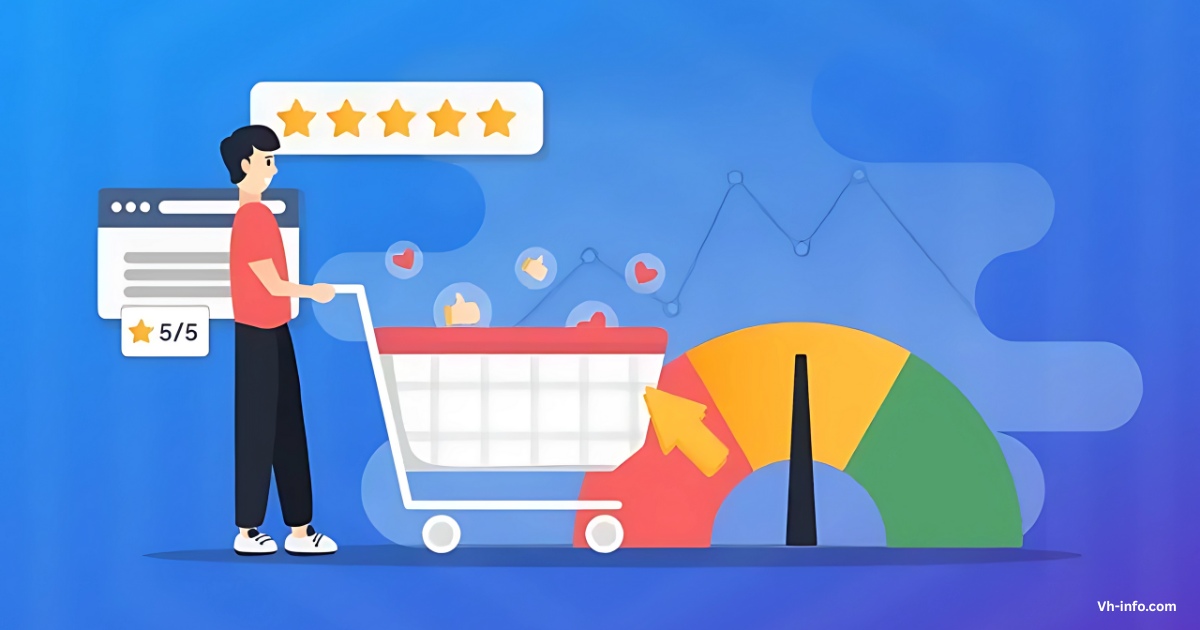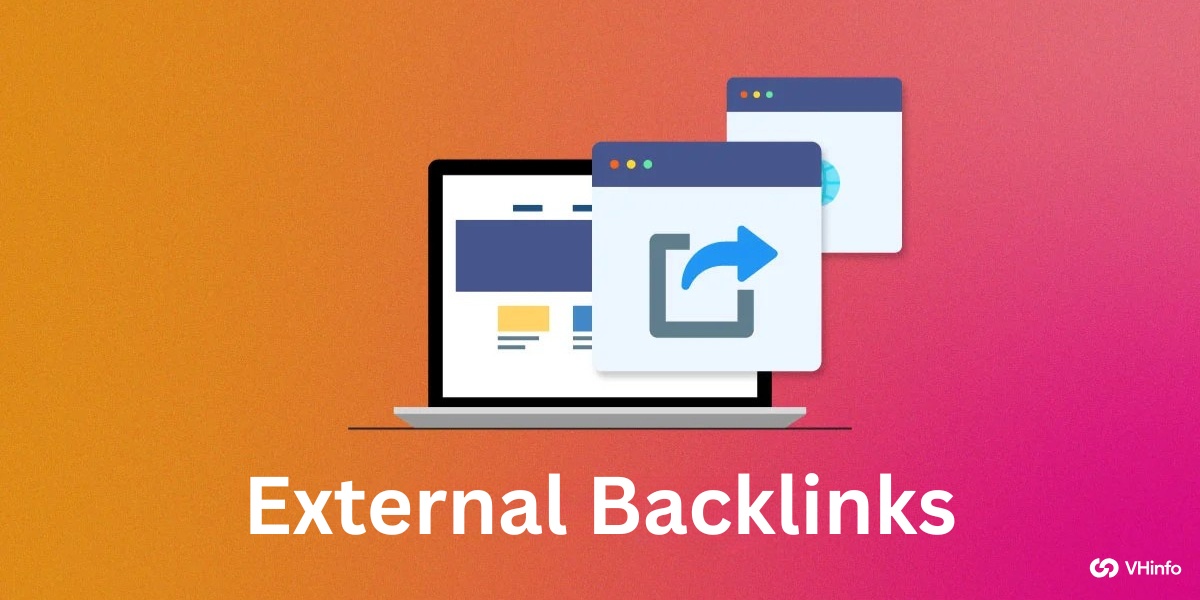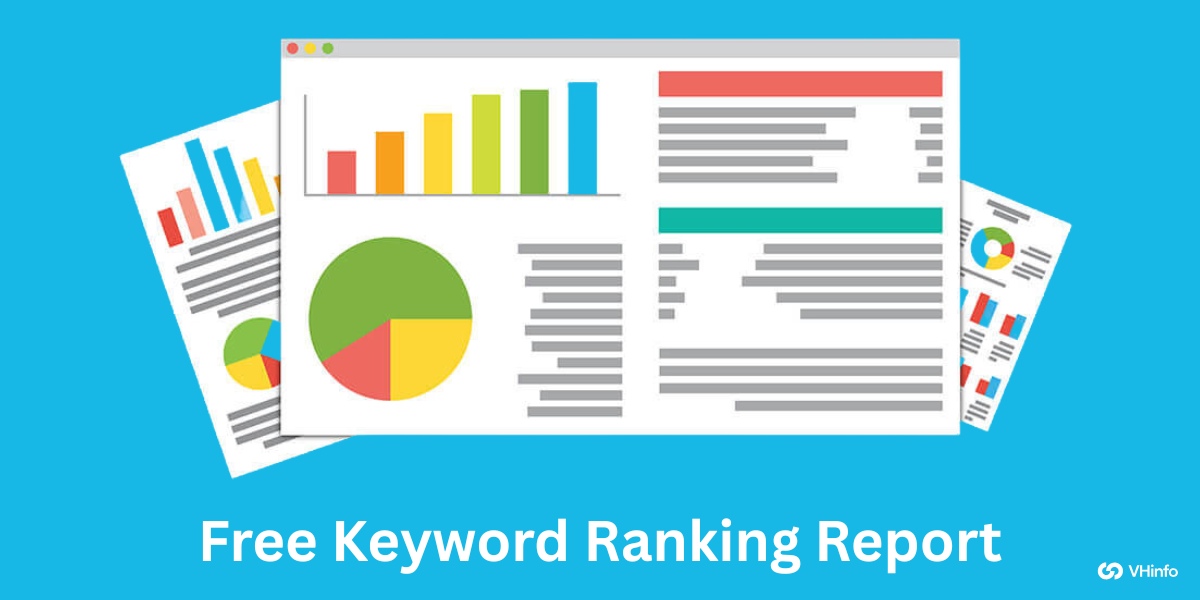Happy customers = successful SaaS businesses! Think of the Customer Satisfaction Index (CSI) like a “report card” showing how well your company keeps users smiling. For apps and software companies, CSI checks if customers enjoy using your product, get help when needed, and feel valued. Why does this matter? Happy customers stick around longer, pay regularly, and tell friends about you!
At VH Info, we’ve helped many SaaS teams use CSI to spot problems (like slow customer support or confusing features) and fix them fast. Instead of guessing what users want, CSI looks at everything—product quality, service speed, and even pricing—to give a clear picture of what’s working and what’s not. Simple surveys turn feedback into actionable insights, helping companies make smarter choices.
In a crowded market, CSI is your secret ingredient to stand out.
SaaS companies can enhance loyalty, strengthen their brand’s reputation, and accelerate growth by monitoring satisfaction at every stage, including sign-ups, updates, and troubleshooting.
Let’s dive into how CSI works and how you can use it to win customers for life!
What Is The Customer Satisfaction Index (CSI)?

The Customer Satisfaction Index, or CSI, is a key tool. It measures how happy customers are with a company’s products or services.
This measure looks at many parts of customer experience. It gives a score on how well your SaaS solution meets customer needs over time. This is more than just looking at single events.
CSI started in Sweden in the 1980s. It was first used in the telecom industry. Later, it spread to other fields and countries. In the U.S., the American Customer Satisfaction Index (ACSI) became a standard for many industries.
For SaaS companies, CSI gives important details about different factors that affect customer satisfaction.
Unlike simpler measures, CSI looks at all parts together. It uses scores that show what matters most to customers. These could be product features, ease of use, help from support, onboarding steps, and value for money.
By checking these factors closely, CSI helps understand customer feelings better than just asking one question about satisfaction.
How To Measure The Customer Satisfaction Index?

Measuring CSI effectively requires a systematic approach to data collection and analysis.
Let’s break down the process into manageable components.
CSI Calculation Formula
The standard CSI calculation involves collecting customer ratings across multiple attributes, applying weights based on importance, and calculating a weighted average.
The basic formula is:
CSI = Σ (Weighted Average Score for each Attribute)
Where the Weighted Average Score is calculated by multiplying the attribute’s satisfaction score by its importance weight.
For example, if customers rate your SaaS product’s ease of use at 8/10 and this attribute has a weight of 0.3 (30% importance), the weighted score for this attribute would be 2.4.
After calculating all weighted scores for all attributes, you sum them to get your CSI score, which is then typically converted to a percentage.
Weighted Vs. Unweighted CSI
When you calculate the Customer Satisfaction Index (CSI), you can use two methods: weighted and unweighted.
The weighted CSI gives different levels of importance to each feature based on how much they affect overall satisfaction. This method shows that some things are more important to customers than others.
For example, in a SaaS product, system reliability may be more critical than the look of the design.
On the other hand, unweighted CSI treats all features the same. This is easier to calculate, but it may not show the real reasons for customer satisfaction.
At VH Info, we suggest using the weighted method for SaaS companies. This method gives a better idea of what really matters to your customers. To find suitable weights, ask customers to rate their happiness with each feature and how important that feature is for them.
Benefits of Using the Customer Satisfaction Index
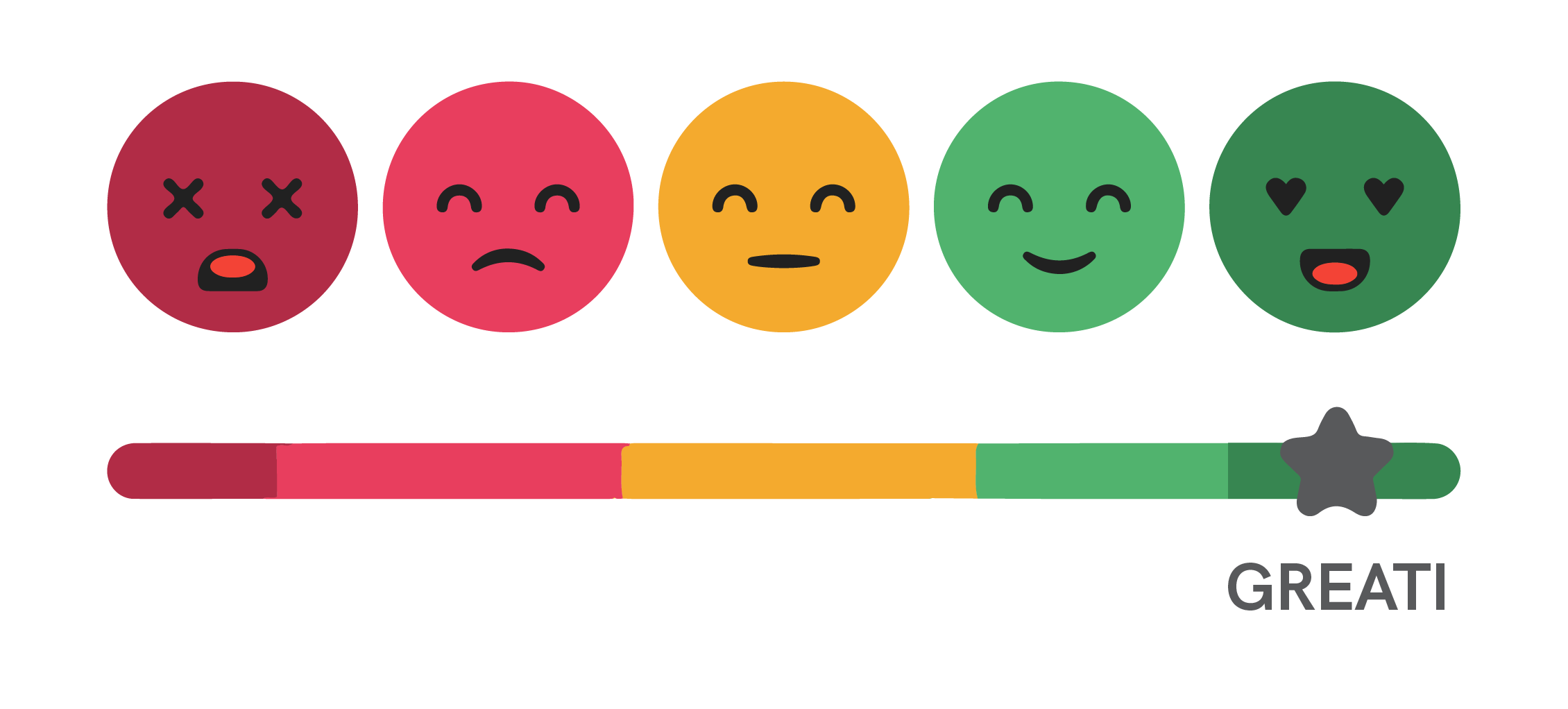
Implementing CSI offers numerous advantages for SaaS businesses looking to enhance their customer experience strategy.
Improved Customer Retention
High CSI scores are linked to more customer loyalty. When clients are happy with your SaaS service, they are less likely to leave. A study from Bain & Company found that a 5% rise in customer retention can boost profits by 25% to 95%.
By checking CSI regularly, you can spot problems early. This way, you can fix issues before they cause customers to leave.
Identifying Opportunities For Improvement
The Customer Satisfaction Index, or CSI, helps find areas where your SaaS product does not meet customer needs. It shows which parts need work the most. By looking at each score, you can choose what to fix first. This will help raise overall customer happiness.
For instance, if your CSI shows that users are unhappy with the onboarding process, you can use resources to improve this part.
Detecting Issues Quickly
Regular CSI measurement allows you to spot negative trends before they significantly impact your business.
When satisfaction scores begin to drop in particular areas, you can take proactive measures to address the underlying issues. This early warning system is particularly valuable for SaaS companies, where customer relationships develop over extended periods.
Difference Between CSI and CSAT (Customer Satisfaction Score)

Understanding the distinction between CSI and CSAT helps you determine which metric to use in different situations.
Key Differences
While both CSI and CSAT measure customer satisfaction, they differ in several important ways:
- Scope: CSAT typically focuses on satisfaction with a specific interaction or transaction, while CSI measures overall satisfaction with your entire SaaS offering over time.
- Methodology: CSAT usually involves a single question (“How satisfied were you with this interaction?”), whereas CSI includes multiple weighted questions across various attributes.
- Time Frame: CSAT provides immediate feedback about a particular touchpoint, while CSI offers a longitudinal satisfaction view.
- Complexity: CSAT is straightforward to calculate and interpret, while CSI involves more complex methodologies, including attribute weighting.
When To Use CSI Vs. CSAT?
Choose CSI when:
- You need to understand overall satisfaction with your SaaS product
- You want to identify which aspects of your offering most influence satisfaction
- You’re looking to track satisfaction trends over time
- You need comprehensive data for strategic decision-making
Choose CSAT when:
- You want feedback about a specific customer interaction
- You need to evaluate a particular feature or service component
- You require immediate actionable insights
- You’re measuring the effectiveness of recent changes
At VH Info, we recommend using both metrics as part of a comprehensive customer feedback strategy. CSAT provides quick insights about specific touchpoints, while CSI offers the big-picture view needed for strategic planning.
What Are The Factors That Affect CSI?
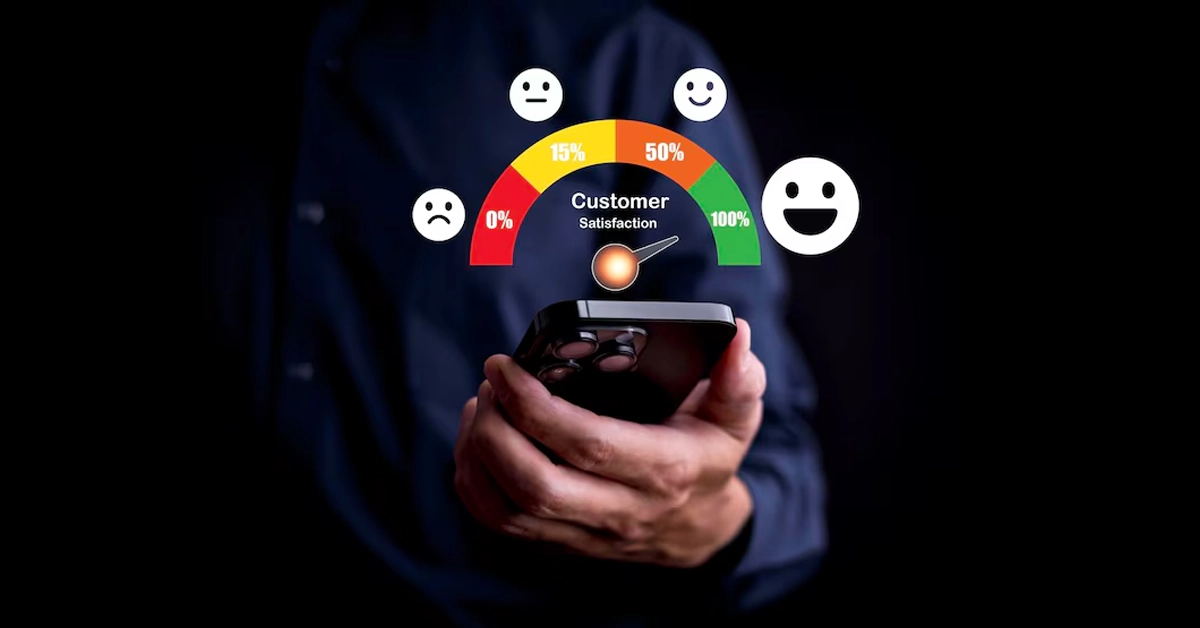
Multiple factors influence your Customer Satisfaction Index score.
Understanding these elements helps you take targeted actions to improve satisfaction.
Quality Of Product Or Service
Product quality is one of the most important parts of customer satisfaction. This is especially true for SaaS companies.
For them, product quality means reliability and good performance. It also includes having all the needed features and working without bugs. Customers want your software to work as you said it would. They expect to get the value they hoped for when they signed up.
Customer Service
The quality of your customer support significantly impacts CSI scores. Fast response times, knowledgeable support agents, and easy access to help across multiple channels all contribute to higher satisfaction levels.
For SaaS businesses, effective onboarding and ongoing customer success initiatives are particularly important aspects of customer service that influence satisfaction.
Price and Value
Customers always think about if your SaaS product is worth the money. This view is not just about the price. It is also about if the benefits are worth what they pay. You can improve how customers see value by updating features often. Clear talks about benefits also help.
Lastly, make sure customers use your product fully.
Brand Reputation
Your company’s reputation affects how customers see their experiences with your product. Good brand images can boost satisfaction. On the other hand, bad news can lower CSI scores. This can happen even if the product itself does not change.
For SaaS companies, being open, safe, and fair helps create a strong reputation. A good reputation positively affects customer satisfaction.
Strategies For Improving Your CSI

Once you’ve measured your CSI, taking action to improve it becomes the priority.
Here are effective strategies for boosting your scores.
Enhancing Customer Experience Through Feedback
Customer feedback provides invaluable insights for improving satisfaction.
Implement these approaches:
- Create multiple feedback channels to capture customer sentiment at different touchpoints throughout the customer journey.
- Segment feedback by customer type, plan tier, or usage patterns to identify satisfaction differences between groups.
- Analyze both quantitative data and qualitative feedback to understand not just what customers feel but why they feel that way.
- Close the feedback loop by acknowledging customer input and communicating how you’re addressing their concerns.
Implementing Changes Based On CSI Insights
Turn CSI data into actionable improvements:
- Prioritize changes based on attribute weights – focus first on high-importance areas with low satisfaction scores.
- Create cross-functional teams to address complex satisfaction issues that span multiple departments.
- Test improvements with small customer segments before full implementation.
- Measure the impact of changes by comparing pre- and post-implementation CSI scores for affected attributes.
How To Calculate CSI?
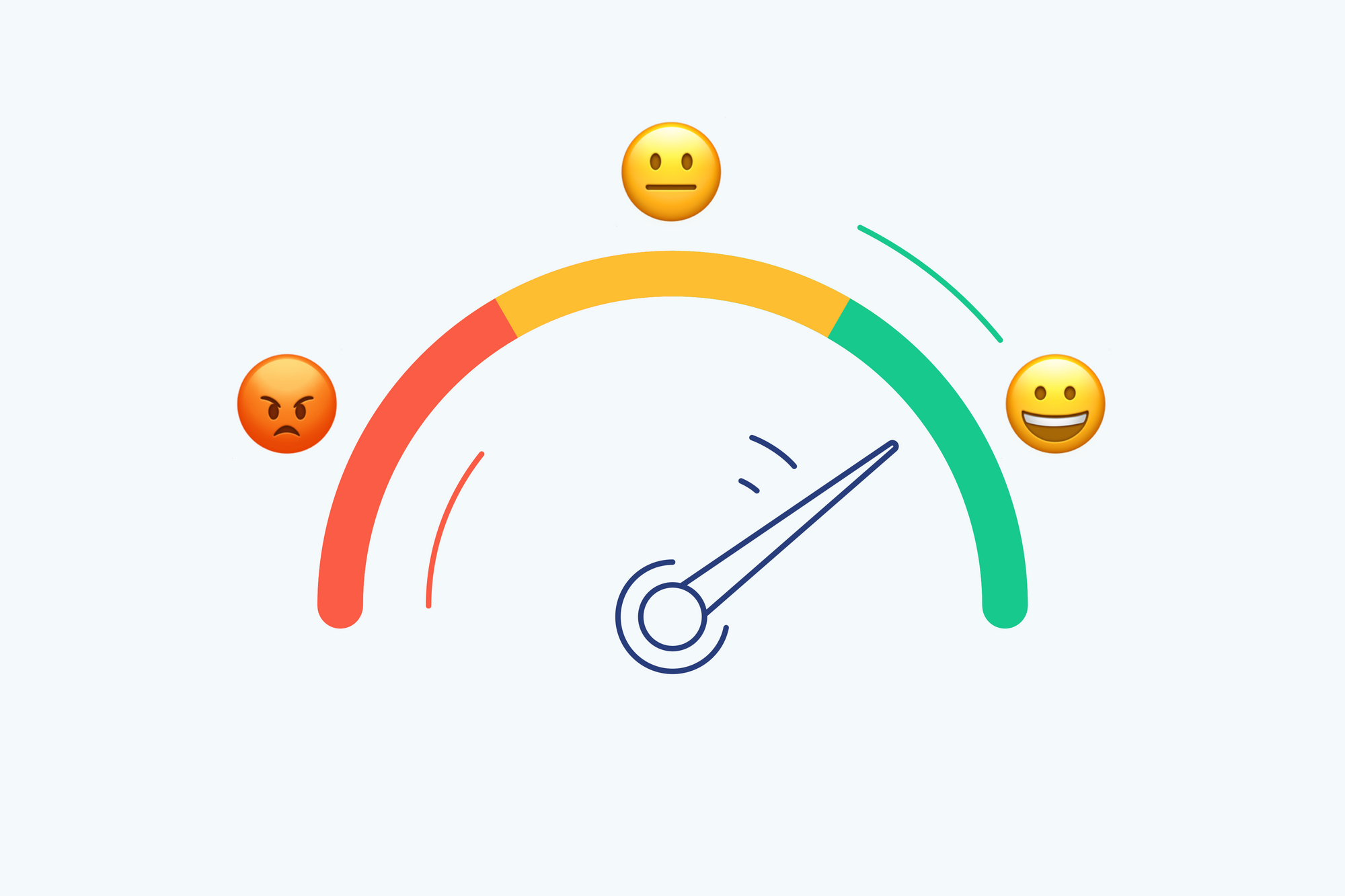
Calculating your Customer Satisfaction Index involves a structured process from survey creation to final analysis.
- Create A Survey: Develop a comprehensive survey that addresses key aspects of your SaaS offering. Include questions about product functionality, user interface, customer support, documentation, and value for money. Use a consistent rating scale (typically 1-5 or 1-10) for all questions. Add importance rating questions for each attribute if you’re planning to use a weighted calculation approach.
- Distribute The Survey: Send your survey to a representative sample of your customer base. Consider timing your survey distribution to reach customers at different stages of their journey with your product. Aim for a sufficient response rate (typically 20% or higher) to ensure statistical validity.
- Collect Responses: Gather survey responses over a defined period. To increase participation, keep surveys concise, mobile-friendly, and offer incentives like extended features or account credits. Use reminder emails for customers who haven’t responded, highlighting the value their feedback provides.
- Calculate Individual Satisfaction Scores: For each attribute in your survey, calculate the average satisfaction score across all respondents. If using a weighted approach, also calculate the average importance score for each attribute. These individual scores help identify specific strengths and weaknesses in your offering.
- Calculate The Overall CSI: Apply your chosen CSI formula to compute the overall index. For a weighted CSI, multiply each attribute’s satisfaction score by its importance weight, then sum these weighted scores. For easier interpretation, convert your final score to a percentage by dividing by the maximum possible score and multiplying by 100.
Example Calculation of Customer Satisfaction Index (CSI)
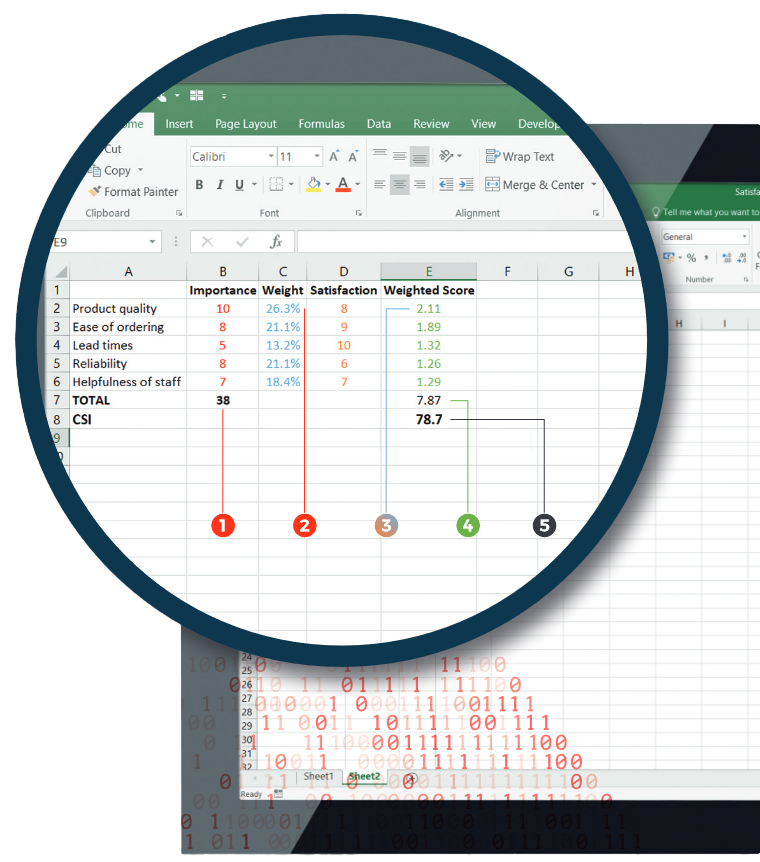
Calculating the customer satisfaction index (CSI) is a simple process.
Let’s walk through a practical example of calculating CSI for a SaaS company.
Step 1: Calculate Individual Satisfaction Scores
Imagine you’ve surveyed customers about five key attributes of your SaaS product on a 1-5 scale:
- Product Reliability: Average score 4.3
- User Interface: Average score 4.0
- Customer Support: Average score 3.8
- Documentation: Average score 4.2
- Value for Money: Average score 4.1
Step 2: Calculate The Overall CSI
For an unweighted calculation, simply add these scores and divide by the number of attributes:
(4.3 + 4.0 + 3.8 + 4.2 + 4.1) ÷ 5 = 4.08
For a weighted calculation, multiply each score by its importance weight:
- Product Reliability (weight 0.30): 4.3 × 0.30 = 1.29
- User Interface (weight 0.20): 4.0 × 0.20 = 0.80
- Customer Support (weight 0.25): 3.8 × 0.25 = 0.95
- Documentation (weight 0.10): 4.2 × 0.10 = 0.42
- Value for Money (weight 0.15): 4.1 × 0.15 = 0.62
Sum of weighted scores: 1.29 + 0.80 + 0.95 + 0.42 + 0.62 = 4.08
Step 3: Convert The CSI Score Into A Percentage
To express this as a percentage, divide by the maximum possible score (5) and multiply by 100:
(4.08 ÷ 5) × 100 = 81.6%
This CSI score of 81.6% indicates generally high customer satisfaction but also shows room for improvement, particularly in customer support (the lowest-scoring attribute).
Customer Satisfaction Index Examples
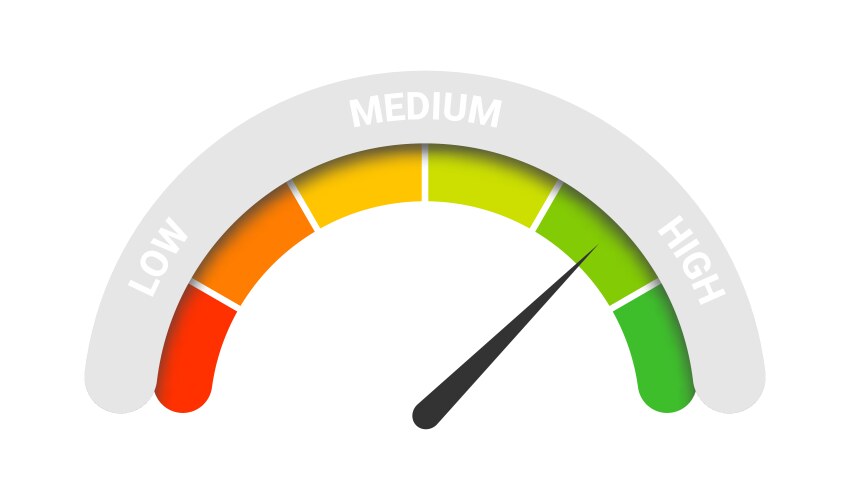
Different industries and companies implement CSI in ways tailored to their specific needs:
- SaaS Example: A project management software company might focus their CSI on attributes like feature completeness, integration capabilities, system uptime, and support responsiveness. Their CSI survey could include questions about these aspects plus overall satisfaction and likelihood to renew.
- E-commerce Example: An online retailer might build their CSI around website usability, product quality, delivery speed, and return process efficiency. Their weighted formula might place higher importance on product quality and delivery reliability based on customer feedback.
- Banking Example: A financial institution’s CSI might include measures of transaction accuracy, mobile app functionality, branch experience, and customer service responsiveness. They might track separate CSI scores for different customer segments to address varying needs.
At VH Info, we’ve found that the most effective CSI implementations for SaaS companies include both product and service dimensions, with weightings adjusted based on the specific value proposition of the software.
How Can Businesses Improve Their CSI?

Improving your CSI requires a strategic approach focused on addressing key satisfaction drivers.
- Gather Feedback From Customers: Implement regular feedback collection mechanisms beyond your CSI survey. Use in-app feedback tools, customer interviews, support ticket analysis, and social media monitoring to gather insights. Create a systematic process for categorizing and prioritizing this feedback based on impact and alignment with your product roadmap.
- Address and Resolve Customer Complaints: Establish clear protocols for handling customer issues. Train support teams to not only solve problems but also identify and flag recurring issues that might indicate systemic problems. Track resolution times and satisfaction with resolutions as part of your overall customer service metrics.
- Train Employees On Customer Service: Invest in comprehensive training for all customer-facing staff. Ensure they understand the importance of customer satisfaction to your business model and have the tools and authority to resolve issues effectively. Create clear escalation paths for complex problems that require additional expertise.
- Continuously Monitor and Improve Processes: Implement a continuous improvement cycle for all aspects of your customer experience. Regularly review customer journey maps to identify friction points and opportunities for enhancement. Use A/B testing to validate changes before full implementation, and measure the impact on satisfaction scores over time.
Best Practices For Maximizing CSI Effectiveness

To get the most value from your CSI program, follow these industry-proven best practices.
- Integrating Key Attributes: Select attributes that truly matter to your customers rather than what’s easiest to measure. Conduct research to identify the factors that most influence satisfaction and loyalty in your specific market segment. Review and update these attributes periodically as customer expectations evolve.
- Regular Measurement Across Touchpoints: Measure CSI consistently across all major customer touchpoints and stages of the customer journey. This comprehensive approach helps identify how satisfaction varies throughout the customer lifecycle. Consider implementing rolling surveys rather than annual measurements to capture more timely feedback.
- Using Data For Weighted Indices: Use data analysis to determine optimal attribute weightings. Use statistical techniques like regression analysis to identify which factors have the strongest correlation with overall satisfaction and retention. Adjust weightings periodically based on changing customer priorities and market conditions.
FAQ’s:
How Does The Customer Satisfaction Index Differ From Net Promoter Score?
While both measure customer sentiment, CSI provides a comprehensive view of satisfaction across multiple attributes, whereas NPS focuses specifically on likelihood to recommend.
NPS is measured with a single question on a 0-10 scale, categorizing customers as promoters, passives, or detractors. CSI offers more detailed insights into specific aspects of your offering but requires more extensive surveying.
Many SaaS companies use both metrics as part of their customer experience measurement program.
How Can Companies Effectively Use Customer Satisfaction Index Data To Improve Their Services?
Companies should analyze CSI data to identify satisfaction gaps between customer expectations and experiences.
Focus improvement efforts on attributes with high importance weights but low satisfaction scores. Create cross-functional task forces to address systemic issues, and implement changes incrementally with clear metrics for success.
Regularly communicate improvements back to customers to demonstrate responsiveness to their feedback.
Can CSI Be Customized For Different Industries?
Yes, CSI can and should be tailored to reflect industry-specific factors that drive customer satisfaction. SaaS companies typically focus on product reliability, feature set, ease of use, and customer support.
The weighting of these factors may vary based on whether your software serves technical users, business professionals, or consumers. Review industry benchmarks but customize your CSI framework to align with your unique value proposition.
Can Small Businesses Benefit From Tracking CSI?
Absolutely. While smaller SaaS companies may implement simpler versions of CSI, the insights gained remain valuable regardless of business size. Small businesses can start with basic unweighted CSI measurements and evolve their approach as they grow.
The key is consistency in measurement and commitment to acting on the results. Even with limited resources, focusing on improvements on the most impactful satisfaction drivers can yield significant retention benefits.
Conclusion
The Customer Satisfaction Index helps SaaS companies measure and improve customer happiness. It tracks many parts of customer joy.
When a company uses a good CSI program, it learns about what customers want. This leads to better changes that keep customers and help the business grow.
At VH Info, we have seen how using CSI can change SaaS companies for the better. It gives clear steps for making products, improving customer service, and planning business goals.
Companies that do well often not only check satisfaction but also make plans to use what they learn. They turn these ideas into real changes. Keep in mind that CSI is not just a one-time check. It is an ongoing task that grows with your company and its customers.
Consistently enhancing your strategies and prioritizing customer satisfaction can lead your SaaS business to achieve enduring success in a challenging market.
